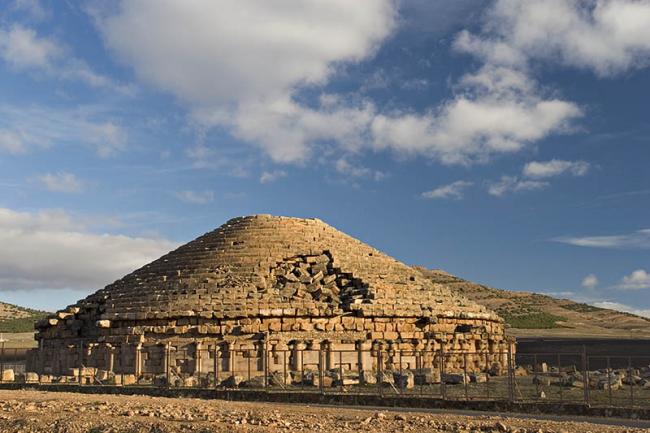Wattassides.




Morocco in the early sixteenth century: in red, the field of Wattasides
Wattassides or Wattasids or Banu Watâs are a tribe of Berbers as Zenata Mérinides. This tribe, which would initially originated in present-day Libya, was established in the Rif, bordering the Mediterranean. Their fortress Tazouta between Melilla and Moulouya, Beni Wattas gradually extended their power at the expense of the ruling family Merinid (see detailed article on Wattassides). These two families are related, Mérinides recruited many viziers in Wattassides. The viziers Wattassides necessary gradually to power. The last sultan was dethroned in 1465 Merinid. It follows a period of confusion which lasted until 1472. Morocco is divided into two with the south, an Arab dynasty emerging Saadiens and north a sultanate wattasside decline.
In 1472, the Sultan of Fez Wattassides lost all their strategic territories and have no control of the Strait of Gibraltar. The Portuguese took possession of Tangier in 1471 41puis cede the city to England in 1661 as dowry for Catherine of Braganza brought her husband Charles II of England. English domination of Tangier, relatively short (1661-1684), will be challenged constantly by the British Parliament despite the granting of a charter to the colony by Charles II, and because of the financial hardship that the maintenance of the garrison permanently subjected to the pressure of Moroccan attacks. The evacuation of Tangier is finally decided and assigned to Admiral Lord Dartmouth 42, Moulay Ismail troops take possession of the city after 193 years of foreign domination triple (Portuguese, Spanish, English).
Former Portuguese colony of Mazagan in El Jadida, Morocco recovered in 1769 by the
During the Portuguese rule (1471-1661, with a Spanish interlude between 1580 and 1640), Tangier is the capital of the Algarve in Africa, because there exist two Algarves, one in Europe and one in Africa, both considered personally territories under the house of Aviz and of the House of Braganza (King of Portugal also bears the title of King of the Algarves). Under the successive reigns of Alfonso V, John II and Manuel I (period marking the climax of Portuguese expansion) Algarve encompasses virtually all African Moroccan Atlantic coast, with the exception of Rabat and Salé. The Portuguese controlled the coastal portion extending from Agadir to Ceuta and Boujdour, with points milestone strongholds of Tangier, Asilah, Larache, Azemmour, Mazagan, Safi and Castelo Real de Mogador. On Azemmour originated Estevanico (real name Mustapha Zemmouri), a Moroccan enslaved by the Portuguese and then resold to the Spaniards, and which will be illustrated by its exploration and appreciation of America to the borders of Mexico and of Arizona in the ranks of Hispanic conquistadors.
Possessions of the Crown Lusitane fronteiras are equivalent Portuguese Spanish presidios, and are used as stops on the sea route from Brazil and Portuguese India. However most of Morocco conquered by the Portuguese in 1541 Saadiens. The last fronteira is the Mazagan, recovered by the Moroccans in 1769. Spaniards for their part, attribute the Mediterranean coast with the presidios of Melilla and rock Vélez de la Gomera, as well as the region of Tarfaya facing the Canary Islands. They also take control of Ceuta after the debacle Portuguese in the Battle of the Three Kings which results in the establishment of the Iberian Union (1580) 43.
Wattassides weakened finally give power to a dynasty claiming an Arab origin Sharifian (Saadiens) in 1554
morocco culture,moroccan food,morocco food,moroccan cuisine,morocco beaches,moroccan meal,beaches in morocco,moroccan culture,hercules cave,hercules cave morocco